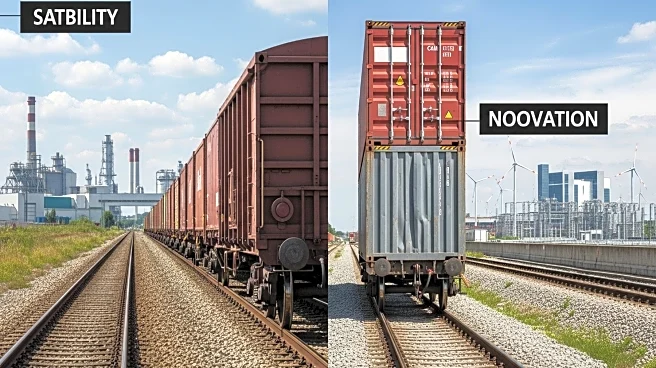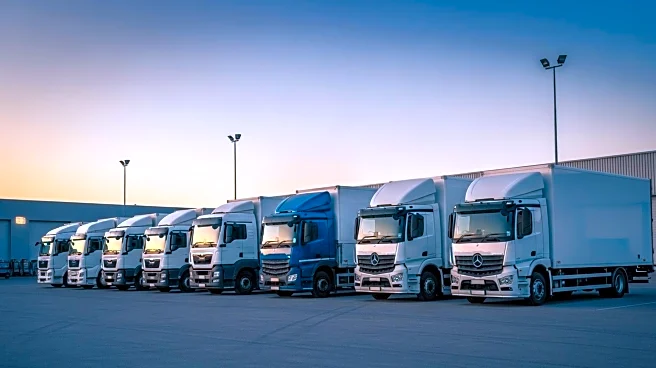What's Happening?
The Association of American Railroads (AAR) reported mixed results for U.S. rail carload and intermodal volumes for the week ending August 23. Rail carloads increased by 0.6% annually to 229,783, with gains in commodity groups such as grain, motor vehicles and parts, and farm products excluding grain and food. However, declines were noted in petroleum products, coal, and miscellaneous carloads. Intermodal containers and trailers fell by 1.9% compared to the same week last year, totaling 282,500 units. Despite these weekly fluctuations, the year-to-date figures show a 2.6% increase in rail carloads and a 4.2% rise in intermodal units.
Why It's Important?
The mixed results in rail carload and intermodal volumes reflect ongoing shifts in the U.S. transportation sector, influenced by economic conditions and commodity demand. The increase in rail carloads suggests resilience in certain sectors like agriculture and automotive, which are crucial for economic stability. Conversely, the decline in intermodal volumes may indicate challenges in logistics and supply chain management, potentially affecting freight costs and delivery times. These trends are significant for stakeholders in the transportation industry, including rail companies, logistics providers, and businesses reliant on freight services.
What's Next?
As the transportation sector adapts to these mixed results, stakeholders may explore strategies to optimize operations and address declining intermodal volumes. This could involve investments in infrastructure, technology, and partnerships to enhance efficiency and competitiveness. The AAR's ongoing tracking of rail and intermodal volumes will provide insights into market trends, guiding future decisions. Additionally, economic factors such as consumer demand and commodity prices will continue to influence rail and intermodal performance, necessitating agile responses from industry players.












